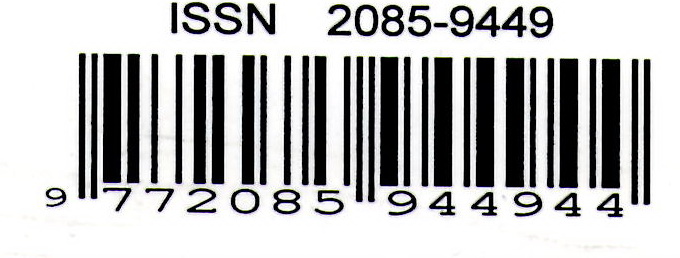ANALISIS TINGKAT KEMATANGAN GONAD DAN FEKUNDITAS IKAN GELODOK PADA EKOSISTEM MANGROVE KELURAHAN MARGO MULYO KECAMATAN BALIKPAPAN BARAT
Abstract
Keywords
References
Burton, M & R. Burton.2002. International Wildlife Encyclopedia. Marshall Cavendish, New York.
Chukwu, K.O., S.N.Deekae and U.U.Gabriel. 2010. Reproductive biology of periopthalmus barbarus (Linneaus1766) in new Calabar River, Nigeria. Agriculture and biology journal of north America. 1(6): 1158-1161.
Djuhanda, T. 1981 ., Dunia ikan. Armico. Bandung Press. 190 h.
Effendie MI. 1997. Biologi Perikanan. Yogyakarta : Yayasan Pustaka Nusatama 163 halaman.
Effendie, Moch. Ichsan. 1997. Biologi Perikanan. Yogyakarta : Yayasan Pustaka Nusatama
Effendie MI. 1979. Metoda biologi perikanan. Yayasan Dewi Sri. Bogor. 112 hlm.
Effendi, M. I. 2002. Biologi Perikanan. Buku Perkuliahan. Fakultas perikanan. IPB. Bogor. 163 hal.
Garbutt N, Prudente C (2006) Wild Borneo: the wildlife and scenery of Sabah, Sarawak, Brunei and Kalimantan. New Holland Publishers. London
Harden Berg. 1935, Penyebaran Habitat Ikan Gelodok Di Indonesia.
Hawa, S. 2000. Studi Biologi Reproduksi Ikan Blodok Boleopthalmus boddarti di perairan Ujung Pangkah, Jawa timur. [Skripsi] Institut Pertanian Bogor. Bogor.
King, R.P. and M.T. Udo., 2001. Fecundity of the mudskipper Periophthalmus barbarus (Gobiidae) in Imo River, Nigeria.Archive of Fishery and Marine Research49(2):117-124
Lawson EO. 2010. Aspects of the reproductive biology in mudskipper, Periophthalmus papilio from mangrove swamps of Lagos lagoon, Lagos, Nigeria. New York Science Journal, 3(11):103-110.
Lawson, E. O., 2011. The length-weight relationships and fecundity estimation in mudskipper, periopthalmus papilio (Bloch and sekneidea 1801) caught from the mangrove swamps of Lagos Lagoon, Nigeria. Journal of fisheries and aquatic science. Academic jurnal Inc. p. 1-8.
Nikolsky, G. V., 1969. Theory of Fish Population Dynamics as the biological Backround for Rational Exploitation and Management of Fishery Resources Oliver & Boyd. Edinburgh.
Polgar, G. dan R. Lim. 2011. Mudskippers, Boleopthalmus Poti (Teleostei: Gobiidae : Oxudercinae) From The Gulf Of Papua, Papua New Guinea, And A key To The Raffles Bulletin Of Zoology 2013 61(1) : 311-321.
Polgar, G. dan R. Lim. 2011. Mudskippers : Human Use, Ecotoxicology And Biomonitoring Of Mangrove And Other Soft Bottom Interdal Ecosystems. Institute of Ocean and Earth Sciences, Faculty of science, University of Malaya Kuala Lumpur. Malaysia.
Sukendi., 2007. Fisiologireproduksiikan. Universitas Riau pekanbaru.
Syandri H. 1996. Aspek Reproduksi Ikan Bilih (Mytacoleucus padangensis) Bleeker dan kemungkinan Pembenihannya didanau singkarak [disertasi]. Program Pasca Sarjana, Institut Pertanian Bogor. Bogor. 121 hal.
Tang, U. M. dan Affandi, R. 2001. Biologi Reproduksi Ikan. Pusat Penelitian Kawasan Pantai dan Perairan Universitas Riau, Pekanbaru. Journal Biologi. 153 hal.
Yasidi, F.,Aslan L.M, Asriyana., Rosmawati, 2005. Penuntun Praktikum Biologi Perikanan. Fakultas Perikanan dan Ilmu Kelautan. Universitas Haluoleo. Kendari.
Refbacks
- There are currently no refbacks.
Copyright (c) 2021 Jurnal Aquarine
Jurnal Aquarine (JAQ) / ISSN : 2085-9449
Organized by - Mulawarman University
Email : jurnal.aquarine@gmail.com

Jurnal Aquarine (JAQ)is licensed under a Creative Commons Attribution-ShareAlike 4.0 International License.





